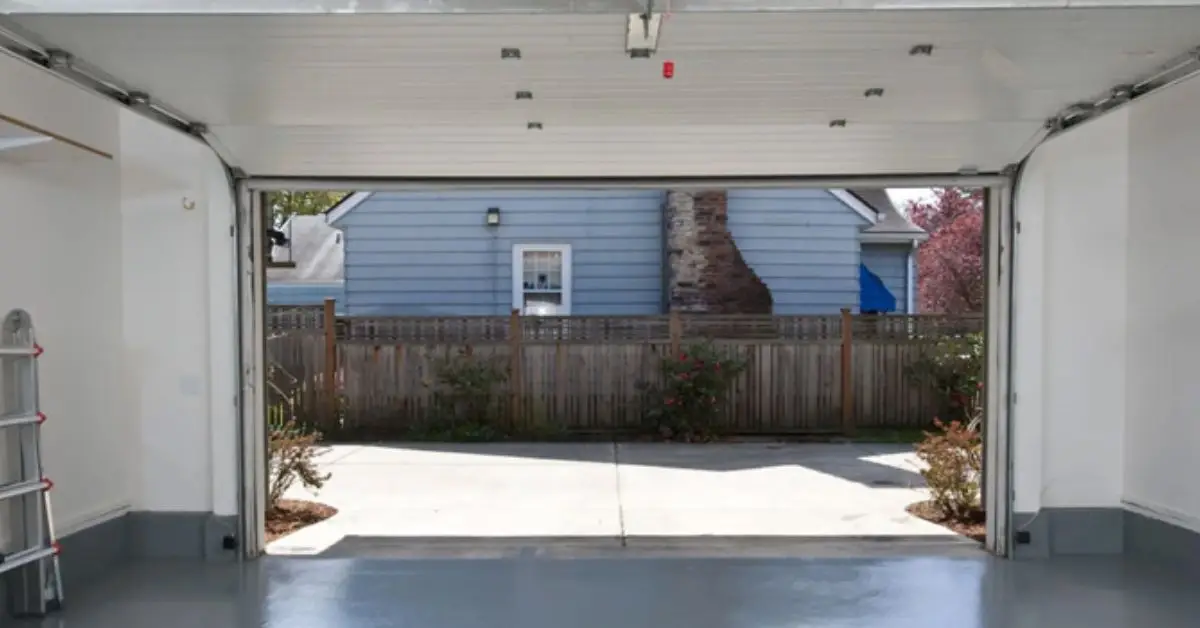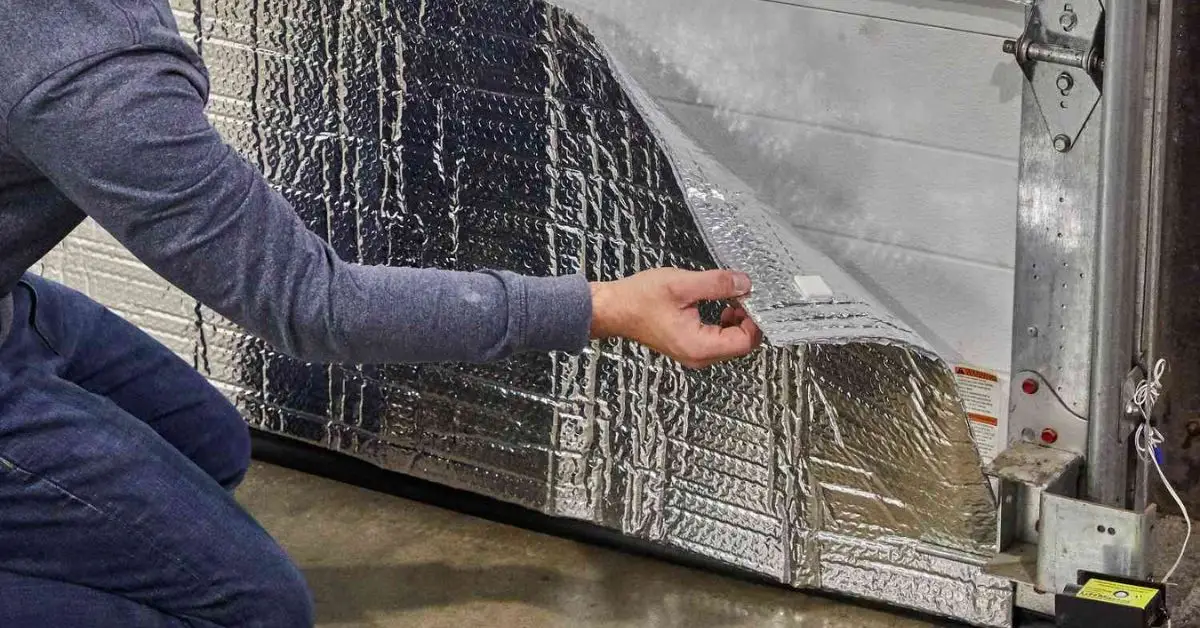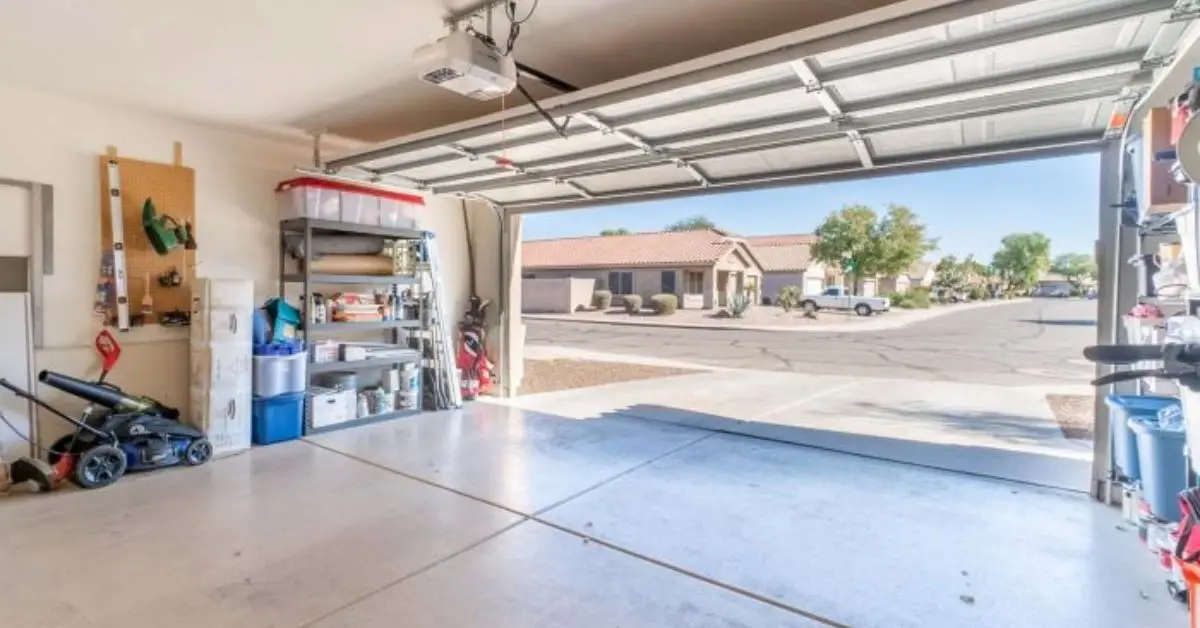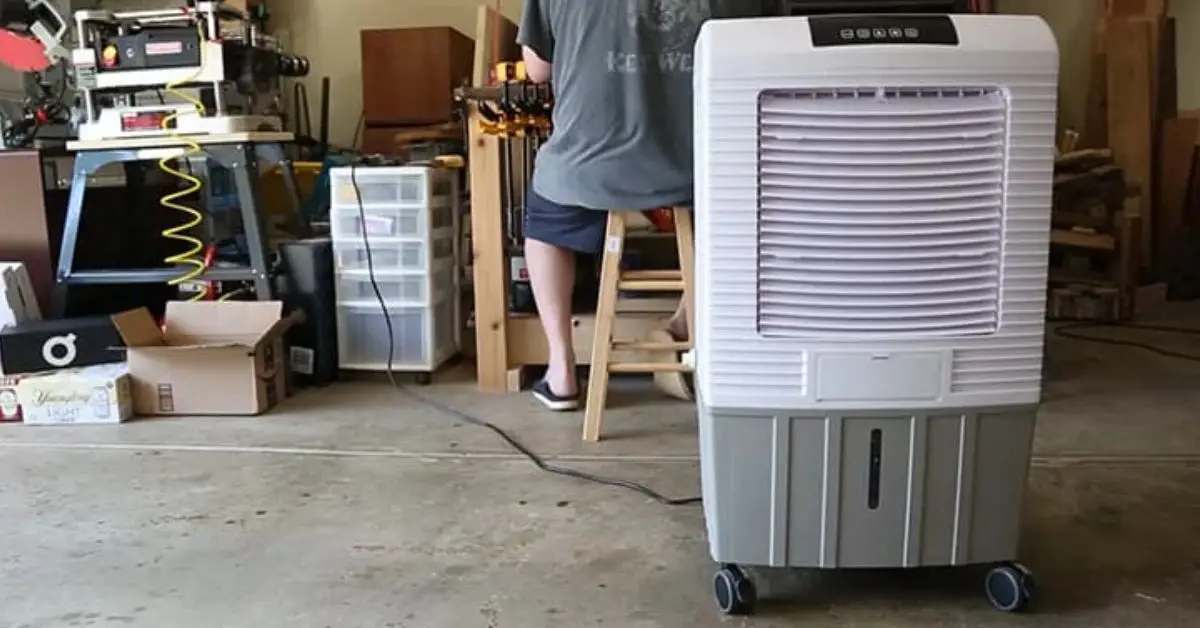Beat the Heat: 6 Garage Cooling Hacks That Don’t Need AC
If your garage turns into a blast furnace every summer, you’re not alone. Most garages are heat traps—built with bare walls, zero airflow, and no real insulation. And if you’re thinking, “I don’t have AC in there, so I guess I just have to suffer through it,” I’ve got good news: you don’t.
Whether you’re using your garage as a home gym, workshop, storage space, or just parking the car—you can cool it down without spending a fortune or calling an HVAC guy. I’ve spent years figuring out what works, digging into expert advice, real homeowner hacks, and a few field-tested tricks of my own. The best part? These are all budget-friendly and don’t require you to rip apart walls.
So if you’re tired of sweating through five minutes in the garage, this guide is for you.
Why Cool Your Garage Without AC? (And Why It Actually Matters)
Let’s be real—most garages weren’t built for comfort. No AC, barely any insulation, and heat just sits there like a sauna with tools. But when summer hits hard, even stepping into your garage for five minutes feels like walking into an oven. Whether you use it as a workshop, gym, storage, or just want your car seats to not feel like lava, cooling it down makes a huge difference.
Now, I get it—you don’t want to drop thousands on HVAC or a mini-split. And honestly, you don’t need to. There are smarter, cheaper ways to beat the heat—without ductwork, high energy bills, or ripping open walls. I’ve tested and researched these hacks, and I’ll walk you through exactly what works.
So if you’ve ever opened your garage and felt like the heat punched you in the face, this one’s for you.
Have you tried any cooling tricks already—or is this your first time fixing this? Let me know in the comments. I’d love to hear what’s worked (or failed) for you.
Why Your Garage Feels Like a Furnace (And What’s Actually Causing It)
Before you throw money at fans or insulation, it helps to know what you’re up against. Most garages are heat magnets for a few reasons—and understanding them is key if you want your cooling hacks to actually work.

First, most garages have little to no insulation. The walls are often unfinished, the garage door is usually metal (which absorbs and radiates heat), and the ceiling might lead directly to an attic that’s hotter than outside. Add in a concrete floor that traps heat and a roof baking in the sun, and you’ve basically built a giant oven.
Second, garages have terrible airflow. There’s no AC, few windows, and usually just one big door that’s either open or shut. That means hot air comes in—and just sits there. If you park your car inside while the engine’s still warm, that heat lingers for hours. Tools, fridges, dryers, or water heaters just add to the problem.
And lastly, many people close their garage during the day to keep it “cool,” but that actually locks the heat in—especially if you haven’t cooled it down earlier.
The good news? Once you understand what’s causing the heat build-up, the solutions make a lot more sense—and they don’t have to cost much.
Have you noticed if your garage gets hotter when the car’s just parked or when the sun hits a certain wall? That small detail can tell you exactly where to start.
Hack #1: Use Smart Ventilation to Move Hot Air Out
If there’s one thing that makes the biggest difference fast, it’s airflow. Most garages trap heat simply because the air has nowhere to go. That’s where smart ventilation comes in—not fancy ductwork, just basic, strategic movement of air using fans.
Start simple: place a box fan or oscillating fan near the garage door to push hot air out. If you can, add a second fan on the opposite side (like near a side window or vent) to pull cooler air in. This creates a cross-breeze that flushes out trapped heat. Even if you don’t have a second opening, cracking the attic access or a vent helps create that air pressure balance.
Some folks go a step further and install exhaust fans near the ceiling—because heat rises, pulling it from the top makes sense. You don’t need a full-blown attic fan either. A basic wall-mounted garage exhaust fan can be installed for under $100 and helps a lot during peak summer.
This isn’t just theory—garage owners on Reddit swear by it, especially in places like Texas or Arizona where garages easily hit 110°F.
Key tip: Run your fans in the early morning or late evening when outside temps are cooler. Otherwise, you’re just circulating hot air.
Have you tried setting up two fans—one in and one out? It’s surprisingly effective, even in smaller garages.
Hack #2: Insulate and Seal the Gaps (It’s Not Just for Winter)
Most people think of insulation as a winter thing—but in reality, it’s just as powerful in summer. If your garage isn’t insulated, every bit of outside heat is sneaking in through the walls, ceiling, and especially the door. And once that heat’s in, it stays trapped.

Start with the garage door. It’s usually a giant slab of metal that absorbs sunlight all day. Adding a layer of rigid foam board or reflective insulation to the inside can drop temperatures by several degrees. You don’t need to go overboard—just sealing the biggest surfaces makes a real difference.
Next, check the gaps around your windows and doors. Use weather stripping or silicone caulk to block hot drafts from slipping in. It’s cheap, takes under an hour, and helps both in summer and winter.
Insulation and sealing are two of the most effective low-cost strategies. And the real magic? Once you do this, every other hack—fans, shade, even portable AC—works better. Because now you’re not just fighting a constant flood of heat.
Pro tip: If your garage ceiling connects to an attic, check if there’s insulation above. If not, even a layer of fiberglass batts can dramatically reduce heat transfer.
What’s the insulation situation in your garage right now—bare walls or already partially sealed? Let’s compare notes.
Hack #3: Use Shade and Reflective Surfaces to Block Heat at the Source
Sometimes, the best way to cool your garage is to stop the heat before it even gets inside. Direct sunlight beating on your garage door, roof, or driveway turns into radiant heat—and your walls soak it up like a sponge. But with a few smart changes outside, you can dramatically lower how much heat your garage absorbs.
Start by shading the sun-facing side of your garage. Planting a fast-growing tree, adding a retractable awning, or even hanging shade cloths can make a noticeable difference. You don’t have to block all the sunlight—just enough to cool down the surfaces that heat up the most. And if your backyard layout is working against you, some common outdoor mistakes could be driving up your cooling costs too.
If you own the property, consider painting the garage roof with a light-colored or reflective coating. This alone can reduce surface temperature by 30°F or more on hot days. You’ll also find radiant barrier paint or foil layers that reflect sunlight rather than absorb it.
According to Southern Living’s tips, using natural shade and reflective materials is one of the most effective passive cooling methods—especially in southern climates where direct sun exposure is intense.
These changes don’t just help your garage. They also reduce indoor temperatures if the garage is attached to your home.
Have you ever noticed which side of your garage gets the most sun? That’s the place to focus first.
Hack #4: Pre-Cool Your Garage with Early Morning Air
Most people think about cooling their garage after it gets hot. But one of the smartest, no-cost tricks is to start early and “pre-cool” the space before the sun has a chance to heat it up.
Here’s how it works: open the garage doors and windows in the early morning or late evening when the outside air is cooler. Use a fan to flush out the warm, stale air that built up overnight. This brings down the garage temperature significantly—sometimes by 10 to 15 degrees—before you seal it for the day.

Then, once the outside temperature starts rising, shut the garage to trap the cooler air inside. It won’t stay cold all day, but it buys you several comfortable hours—especially if you’ve insulated the space and blocked out direct sunlight.
Many DIYers swear by this approach. On Reddit’s r/DIY forum, users from hot states like Texas mention that pre-cooling combined with basic ventilation makes a huge impact—even without fans running all day.
This strategy is especially useful if you use your garage in the morning—whether for workouts, woodworking, or just grabbing tools before the day heats up.
Do you usually leave your garage closed overnight? Try flipping the routine just once—you’ll feel the difference.
Hack #5: Ditch the Hidden Heat Sources Inside
Sometimes it’s not just the sun making your garage unbearable—it’s the stuff inside the garage. Things like second fridges, old freezers, dryers, water heaters, or even workbench tools all throw off heat without you realizing it.
Start by identifying anything that runs on electricity or gas. A fridge or freezer in an uninsulated garage works twice as hard in the heat—and that extra energy gets dumped right into the room as warmth. If you can, move them to a shaded, ventilated area or replace them with garage-rated models built to handle the heat.
Another sneaky culprit: lighting. Swapping old incandescent bulbs for LEDs won’t just cut your energy bill—it’ll lower the heat output too.
Humidity is another factor that makes a hot garage feel even worse. A small dehumidifier can make the space feel cooler and more breathable, especially in humid areas. But keep in mind: some dehumidifiers release warm air, so only use them when needed.
Garage Living highlights how removing heat-generating appliances and managing clutter can help cool air circulate better—and reduce unnecessary heat buildup.
Less clutter, less heat, better airflow. That’s a win across the board.
Quick question: Do you have a fridge or freezer running in the garage right now? Try unplugging it for a day and check if you feel the difference.
Hack #6: Stretch Solutions for When You Need More Cooling Power
If your garage doubles as a home gym, workspace, or hobby zone, fans alone might not cut it—especially in brutal heat. That’s when it makes sense to look at “stretch options”: things that cost more than a basic fan but still avoid the price tag of a full HVAC setup.

The first is a portable AC unit. These plug into a standard outlet and vent through a window or wall. You’ll need a way to exhaust hot air outside (usually through a flexible hose), but the cooling is immediate and strong. Make sure your garage is sealed and insulated first—otherwise you’ll be wasting cold air.
The next level up is a ductless mini-split system. It’s more expensive upfront, but incredibly efficient if you’re using the garage daily. You get strong cooling without ductwork, and some models offer heat in the winter too.
According to This Old House, many homeowners see mini-splits as a smart investment if the garage is being used year-round. They’re quiet, low-maintenance, and won’t spike your energy bill the way window units can. If you’re thinking long-term, smart energy upgrades like mini-splits can also boost your home’s value—not just your comfort.
There’s also the solar-powered route—fans or small coolers that run off portable panels. These don’t chill the air, but they help with ventilation during peak heat hours without using grid power.
These options aren’t for everyone—but if you’re serious about comfort, they’re worth considering.
Is your garage a space you actually use every day—or just a place you pass through? Your answer will tell you if a portable AC or mini-split is worth the upgrade.
Bonus Hacks & Pro Tips Most People Overlook
Once you’ve tackled the main cooling methods, a few smaller tweaks can take your garage from tolerable to actually comfortable. These are the kind of tips most people skip—but they add up fast.
1. Don’t park hot cars inside right away. When you pull in with a hot engine and even hotter tires, you’re releasing a huge wave of heat into the garage. If possible, let the car cool outside for 30–60 minutes before bringing it in.
2. Declutter to improve airflow. A packed garage traps heat. Clear the corners, open up wall space, and store things off the floor where possible. Better airflow means better cooling—even with just one fan. Once your garage is decluttered and better ventilated, keeping it clean becomes way easier—especially if you’re using some of these smart cleaning devices that save you time and effort.
3. Upgrade to LED lighting. Old bulbs give off more heat than light. Swapping to LED keeps things cooler and saves power.
4. Add a door sweep or garage threshold seal. These block hot drafts and bugs from sneaking in underneath.
5. Consider a light-colored floor coating. A reflective or epoxy-coated floor doesn’t hold as much heat as bare concrete—and it’s easier to clean too.
According to Webfoot Concrete Coatings, reflective paint and sealed floors can cut garage heat retention significantly, especially when combined with ceiling insulation and smart fan placement.
These are the small wins that make a big difference over time. No major installs. Just smarter habits and a few tools anyone can apply.
Have you done any of these “micro” upgrades already—or are they on your to-do list? Start with one and watch the difference.
Quick Implementation Planner: What to Do, What It Costs, and What to Expect
Let’s bring it all together. You don’t need to do everything at once—but if you layer the right steps in the right order, your garage will feel dramatically cooler in just a few days.
Here’s a simple breakdown to help you plan:
| Step | What to Do | Estimated Cost | Effort Level | Impact |
|---|---|---|---|---|
| 1. Pre-Cool in the Morning | Open doors/windows + run fan before 9 AM | $0 | Easy | Medium |
| 2. Smart Ventilation | Set up intake + exhaust fans (box or wall) | $30–$150 | Easy–Moderate | High |
| 3. Seal Gaps & Cracks | Weatherstrip doors/windows | $10–$40 | Easy | High |
| 4. Insulate Garage Door | Use rigid foam or reflective panels | $50–$150 | Moderate | High |
| 5. Add Shade or Reflective Coating | Use exterior shade, light-colored paint, awnings | $20–$200+ | Moderate | Medium–High |
| 6. Remove Heat Sources | Unplug extra fridge, upgrade lighting | Varies | Easy | Medium |
| 7. Portable AC / Mini-Split | For daily use or garage conversions | $250–$1,800 | Moderate–High | Very High |
How to use this table:
Start with the low-cost, high-impact options (like pre-cooling and sealing gaps). Then move to insulation and ventilation. Only invest in cooling equipment once the space is optimized—otherwise, you’ll just be cooling the outdoors.
Think of this as a layered system, not a one-shot fix. Each step boosts the one before it.
Which one of these can you realistically knock out this weekend? Even one small change can make a big impact.
A Few Safety Notes Before You Start
As effective as these hacks are, a few things are worth keeping in mind—especially if you’re modifying airflow or installing anything electrical.
- Watch your ventilation with gas appliances. If you have a gas water heater or furnace in the garage, don’t create a strong negative pressure with fans. This could pull carbon monoxide into the space. When in doubt, consult a pro.
- Use safe-rated extension cords and surge protectors for portable fans and AC units. Garage outlets aren’t always grounded properly—don’t overload them.
- Don’t seal up the space too tightly if there’s no airflow. Always keep some ventilation open to prevent moisture buildup or stale air.
- Hire a licensed electrician if you’re wiring in a mini-split or ceiling exhaust fan. Don’t DIY anything you’re not confident in.
Taking a little extra care upfront keeps your setup safe, efficient, and frustration-free.
Ready to Cool Down Your Garage—for Good?
There’s no reason to sweat every time you walk into your garage. With a few smart changes—most of them low-cost—you can turn that overheated space into something way more usable and comfortable.
Start small. Seal a few gaps. Add a fan. Test morning ventilation. Then keep building layer by layer.
What’s the first fix you’re going to try this week? Share it below—or let me know what’s worked for your garage in the past. You never know who else you’ll help by sharing.
Want more smart, budget-friendly home upgrade tips? Visit Build Like New for guides that actually work—no fluff, just real solutions.
Disclaimer: This article is for informational purposes only. Always follow safety guidelines and consult a qualified professional before making electrical, structural, or ventilation changes to your garage.


